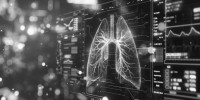
Breathing New Life into Pediatric Care: New Technology
Discover the future of pediatric healthcare with a groundbreaking biomedical breakthrough: a non-invasive breath analysis technique developed by researchers from the University of Basel and UKBB. This innovative method, promising real-time health monitoring without a single needle prick, is set to transform patient care, especially for young individuals. Dive into how this biotech advancement could become the new standard in clinical settings, revolutionizing the way we monitor and manage health.
Revolutionizing Pediatric Care with Biomedical Breath Analysis Technology
At a Glance
Biomedical Development: In a significant biotech breakthrough, researchers have devised a non-invasive technique using breath analysis for real-time health monitoring of young patients.
Study Insight: Conducted by a team from the University of Basel and University Children's Hospital Basel (UKBB), this research, highlighted in Frontiers in Endocrinology, demonstrates the method's reliability, matching that of traditional blood tests, particularly in cases of diabetic ketoacidosis (DKA).
Technological Advancement: This method employs innovative biotech tools, including special bags for air collection and mass spectrometry analysis, to detect various health indicators from a simple breath.
Key Outcomes: The study opens the door to wider applications in health monitoring, including potential enhancements in managing anti-epileptic and cancer treatments through non-invasive means.
Future Prospects: This pioneering biotech approach could soon become a standard in clinical practice, especially in intensive care units, offering a gentler alternative for patient health monitoring.
Biotech Breakthrough in Non-Invasive Health Monitoring
A team of biomedical researchers from the University of Basel and University Children's Hospital Basel (UKBB) has introduced a groundbreaking technique for breath analysis that promises to transform how young patients' health statuses are monitored. Published in Frontiers in Endocrinology, the study showcases a significant leap in non-invasive diagnostic methods, positioning breath analysis as a critical tool in the future of pediatric care.
The Study: A Closer Look
The focus of this research was on children undergoing intensive care treatment for DKA, a critical condition often associated with diabetes. The biomedical team's comparison between breath sampling and traditional blood tests revealed the former's robust capability to accurately monitor patient health. Led by Professor Pablo Sinues, this innovative approach is set to redefine non-invasive monitoring, making it an invaluable asset in the biomedical field.

The Mechanism Behind Breath Analysis
Central to this biotech innovation is the collection of exhaled air using specially designed bags that can hold up to 1.2 liters, simplifying the process for patients by eliminating the need for invasive procedures. The collected breath samples are then analyzed with a mass spectrometer, a process that traditionally requires cumbersome preparation when used for blood samples. The breath analysis method's efficiency in delivering results in less than 15 minutes showcases its potential to significantly improve patient care in a clinical setting.
Implications and Future Directions
The findings from this biomedical research not only validate the effectiveness of breath analysis for health monitoring but also highlight its versatility for broader application in the medical field. The technique's potential in adjusting medication dosages, particularly for anti-epileptic treatments, and its exploration for cancer therapy monitoring underscore the wide-ranging impact of this biotech innovation.
Moreover, the technique's anticipated integration into standard care practices, especially in intensive care units, marks a transformative step forward in pediatric healthcare, driven by advancements in biomedical technology.
A start-up company has emerged from this research, aiming to address the integration challenges of this technology into everyday clinical practice. This initiative signals a promising future for non-invasive patient monitoring, leveraging biotech advancements to ensure better care and outcomes for young patients worldwide.
Conclusion
The development of a breath analysis technique by the University of Basel and UKBB researchers signifies a pivotal advancement in biomedical technology. This non-invasive, rapid, and accurate method for health status assessment could revolutionize pediatric patient care, offering a more comfortable and efficient alternative to traditional monitoring methods.
As this biotech technique progresses and gains further validation, its potential to enhance patient care and treatment precision in clinical settings worldwide becomes increasingly evident, heralding a new era in medical technology.